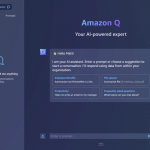Google is constantly updating its search algorithm to provide better and more relevant results for users. One of the systems that Google uses to rank web pages is the helpful content system, which aims to reward original, helpful, and people-first content, and demote content that is low-quality, unhelpful, or spammy. In September 2023, Google announced a new update to the helpful content system, which introduced some changes and improvements to how it evaluates and ranks web pages. In this essay, I will explain what the Google helpful content update is, what it means for webmasters and SEOs, and how to optimize your site for it.
What is the Google helpful content update?
The Google helpful content update is an update to the helpful content system, which is a machine-learning model that generates a site-wide signal used by Google’s automated ranking systems. The helpful content system tries to identify content that seems to have little value, low-added value, or is otherwise not particularly helpful to users. Sites that have relatively high amounts of unhelpful content may see their rankings drop, while sites that have high-quality and helpful content may see their rankings improve. The helpful content system works globally across all languages and is not a manual or spam action.
The Google helpful content update, which started rolling out on September 14, 2023, and is expected to finish in two weeks, contains two important changes to how the helpful content system works. The first change is that Google loosened its guidance on machine-generated content, which is content that is created by artificial intelligence or other automated methods. Previously, Google stated that the helpful content system prioritized content written by humans, but now it states that it prioritizes content created for people. This means that machine-generated content may not be penalized as much as before, as long as it is original, helpful, and relevant to users.
The second change is that Google added new guidance on hosting third-party content on your main site or subdomains. Third-party content is content that is largely independent of your main site’s purpose or produced without your close supervision or involvement. For example, some news sites may host third-party credit card affiliate content on their subdomains. Google warns that such content may be included in the site-wide signals it generates, such as the helpfulness of content. Therefore, if you host third-party content on your site or subdomains, you should block it from being indexed by Google using robots.txt or noindex tags.
What does the Google helpful content update mean for webmasters and SEOs?
The Google helpful content update means that webmasters and SEOs should pay more attention to the quality and value of their content, and avoid hosting or producing unhelpful or low-quality content on their sites. The update may affect the rankings of some sites positively or negatively, depending on how much helpful or unhelpful content they have. If you notice a change in traffic after the update, you should self-assess your content and fix or remove any that seems unhelpful.
To create helpful and reliable people-first content, Google provides some questions that you can use to evaluate your content. Some of these questions are:
• Does the title accurately describe what the page is about?
• Does the page provide original information or analysis?
• Does the page provide substantial value compared to other pages in search results?
• Is the page written by an expert or enthusiast who knows the topic well?
• Is the page free of spelling or grammatical errors?
• Is the page well-organized and easy to navigate?
• Is the page designed to help users achieve their goals?
By answering these questions honestly and objectively, you can identify areas where you can improve your content and make it more helpful for users.
Conclusion
The Google helpful content update is an update to the helpful content system, which is a machine-learning model that generates a site-wide signal used by Google’s automated ranking systems. The update aims to better reward original, helpful, and people-first content, and reduce the search presence of unhelpful or low-quality content. The update introduced two changes: loosening the guidance on machine-generated content and adding new guidance on hosting third-party content on your site or subdomains. The update may affect the rankings of some sites positively or negatively, depending on how much helpful or unhelpful content they have. Webmasters and SEOs should pay more attention to the quality and value of their content, and avoid hosting or producing unhelpful or low-quality content on their sites. They should also self-assess their content using Google’s questions and fix or remove any that seems unhelpful. By creating helpful and reliable people-first content, webmasters and SEOs can improve their site’s performance and user satisfaction in Google Search.



